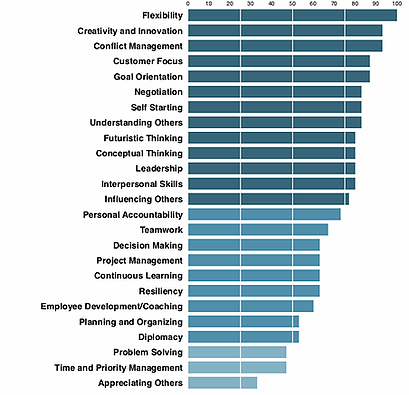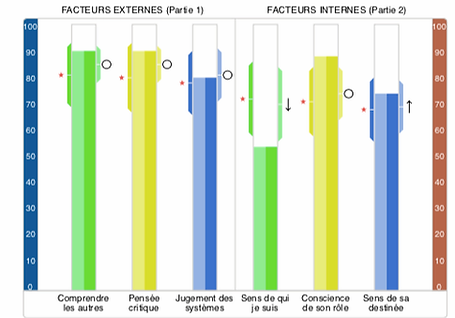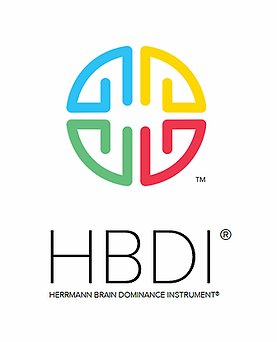
OUR TOOLS
Personality and behavior
"How do we act? It is to this fundamental question that the DISC tool provides answers. This method is based on emotions and allows to better understand how a person finds his energy, his self-motivation and his responses to external pressures.
During the 20th century, the American psychologist William Moulton Marston developed a method to decipher and analyze these behaviours. His research, including his book The emotions of normal people published in 1928, helped consolidate and validate this language.
The DISC tool, for Dominance Influence Stability Conformity, was born. Marston did not invent the behaviour assessment system, he did not even perceive the application potential of his research. Nonetheless, the publication of his work has fueled behavioural studies and this has led, in the long term, to develop a modern vision of the DISC tool, supplementing Marston's initial thought.
This method aims to decipher our behaviours, our interactions and our way of reacting with others. Notions such as education, intelligence or experience are not taken into account in this assessment. The only thing that matters is our way of being and what follows from it.
The DISC tool offers real versatility:
-
In recruitment, it establishes a precise job profile and optimizes the hiring process. The needs of the position are highlighted and the choice of candidate is based on the expectations expressed. Thanks to the use of DISC, the compatibility between recruiter and candidate is thus reinforced, as is the integration of the new recruit in the company.
-
In advice/coaching, the DISC allows you to intervene on issues relating to individual communication (getting to know each other better

Interest and values
What motivates an individual? The WPMOT (Workplace Motivators) tool allows you to highlight what the individual considers important in his work environment and to know the drivers of each.
The tool is based on research conducted by the German philosopher and psychologist Eduard Spranger. More particularly his book Types of men in which he attempts to decipher the values of individuals and the impact they can have on their behaviors.
In his approach, Spranger highlights six attitudes corresponding to the glasses we wear to judge the world around us. Each attitude can then be expressed as a driver or a filter to our daily actions.
The 12 motivators is a valuable tool for your business. And for good reason, it reveals the different motivating factors and thus helps to better understand the priorities that an individual has set for himself. The report produced helps respondents to gain a better understanding of their professional environment and thus help them better achieve their objectives.
This tool offers great versatility in its application and allows the following effects:
-
Reduction in turnover;
-
Better job satisfaction;
-
Conflict reduction;
-
Strengthen cohesion;
-
Better self-awareness.


Skills assessment
In many positions, personal skills are as important as technical skills to achieve superior performance. Personal skills are often transferable to different positions, while technical skills are generally more specific.
This report assesses the 25 most used skills in a work environment.
We can then draw a very precise portrait of skills of a potential candidate in order to see:
-
If he meets the conditions for accession to the post;
-
If he is able to improve certain skills over time;
-
If its capabilities are sought after by the company;
-
What are its strengths and weaknesses.
Depending on the position, especially for managers and executives, these 25 skills are often more used and relevant to the task than professional skills. It is therefore essential, when evaluating these positions, to have a skills assessment.

Emotional intelligence
In the 1990s, Peter Salovey and John Mayer, two American academics, worked on an innovative concept: emotional intelligence. According to their research, an individual's intelligence is no longer measured only by his intelligence quotient, but also by his emotions and the way he manages them.
A concept taken up and popularized by the American psychologist Daniel Goleman who has devoted several works to this new concept. Today there are several models dedicated to this innovative notion of emotional intelligence. Based on the various studies carried out, TTI Success Insights has developed a new fun tool that assesses this emotional quotient.
The EQ tool therefore allows a better understanding of our emotions, like those of our loved ones. It is an innate talent that can be developed. This is why our evaluation also provides a concrete approach on how to put this knowledge into practice in our daily behavior.
Emotions influence our decisions, our behavior. Knowing how to become aware of one's own emotional state is a first step towards more rational thinking. In recruitment, the EQ tool makes it possible to differentiate between several candidates in terms of know-how and in advice, the EQ can help to work on oneself, on one's stress, communication, management or even the decision-making process. of decision.

Openness to development
Taking up the work of the German philosopher Robert S. Hartmann, this evaluation aims to decipher the cognitive skills and the learning and development capacity of an individual.
Offering a much more complete approach than a CV or an interview, the ACU report provides real knowledge of the cognitive aspects and capacities of the respondent.
Revealing potential, this report highlights the capacity of an individual to:
-
Understand its place in an organization;
-
Understand the place of others in the organization;
-
Analyze their performance and the needs related to their task
-
Develop new technical skills
-
Develop new human skills
-
Develop leadership
-
Identify and improve your communication skills
In the current hiring context, it is essential to find candidates with an ability to learn to raise, intellectual flexibility and openness to development. This test is the ideal tool to find this kind of candidate.

The Herrmann profile
Drawing on the research of neurobiologists Roger Sperry and Paul McLean on brain function, the American researcher Ned Herrmann developed the HBDI (Herrmann Brain Dominance Instrument) questionnaire which, after treatment, produces the "Profile of Brain Preferences" of a nobody.
It then becomes possible to understand how our professional choices, our way of working, learning, managing and communicating are influenced by our cerebral preferences.
For the Herrmann tool, there are no right or wrong answers.
It is neither a psychotechnical test nor an IQ type test.
The HBDI profile is a grid that functions like a simplified map of the human mind used to identify the learning processes specific to each person and to see, depending on the situation, the parts of the brain that are involved.
